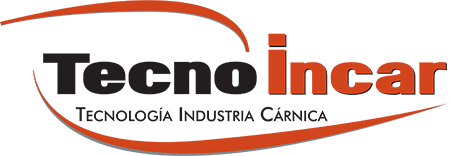Beef and pork cutting rooms, although they may seem similar because both are dedicated to meat processing, have important differences due to the specific characteristics of each type of animal and the regulations governing their processing.
Discover the key differences between beef and pork cutting rooms. We explain the specific cutting processes, hygiene and safety regulations, and the particularities in handling each type of meat.
Learn about the techniques and equipment used and how these differences impact the final product’s quality and presentation.
Here are some of the main differences between Beef and Pork Cutting Rooms:
-
Size and Equipment:
Beef:
Animal Size: Beef animals are significantly larger than pork, requiring larger and more robust equipment to handle and process the carcasses.
Specialized Equipment: Stronger cranes and rail systems are needed to move the large and heavy pieces of beef.
Pork:
Animal Size: Pork animals are smaller, so the equipment can be lighter and less robust.
Specific Equipment: Although specialized equipment is needed, it is on a smaller scale compared to what is required for beef.
2. Cutting Processes:
Beef:
Initial Cutting: Involves larger cuts and the separation of large portions such as the forequarter and hindquarter.
Greater Variety of Cuts: Due to the large size of the animal, beef cutting can result in a greater variety of specific cuts.
Pork:
Initial Cutting: The carcasses are more manageable, and the initial process can be faster.
Specific Cuts: Although there is also a variety of cuts, they tend to be fewer and more standardized compared to beef.
3. Regulations and Standards:
Beef:
Sanitary Control: Diseases such as Bovine Spongiform Encephalopathy (BSE) require specific and strict sanitary controls.
Traceability: While important, regulations can be less strict compared to pork.
Pork:
Sanitary Control: Also requires sanitary controls, but the diseases are different.
Traceability: Although important, the regulations can be less strict compared to beef.
4.Hygiene and Safety:
Beef:
Greater Focus on Hygiene: Due to the larger size of the cuts and the longer processing time required, greater attention to hygiene is necessary to prevent contamination.
Water Usage: More water may be required for cleaning and disinfecting areas and equipment.
Pork:
Speed in Cutting: The cutting process can be faster, which may reduce the risk of cross-contamination.
Cleaning: Areas and equipment also need to be sanitized, but on a potentially smaller scale compared to beef.
5. Final Products:
Beef:
Variety of Products: From fresh cuts to cured products like beef jerky and ham.
Added Value: Beef products often have higher added value due to perceived quality.
Pork:
Traditional Products: Include sausages, cured hams, and other typical products like chorizo.
Additional Processing: Many pork products undergo additional processes such as curing, smoking, or fermentation.
6. Workflow and Ergonomics:
Beef:
Workflow: Due to the larger size of carcasses, the workflow can be slower and requires more stages in the cutting process.
Ergonomics: Workers need to handle heavier pieces, which can increase the risk of injuries. Specific tools and ergonomic training are necessary to mitigate these risks.
Pork:
Workflow: Smaller pieces allow for a faster and more efficient workflow.
Ergonomics: Although there can still be risks of injuries, handling lighter pieces makes the work easier and can reduce fatigue.
7. Storage and Preservation:
Beef:
Storage: Cold storage rooms and storage systems must be capable of handling larger and heavier pieces.
Preservation: Beef is often aged or matured to improve tenderness and flavor, requiring specific facilities for this process.
Pork:
Storage: Storage can be more efficient in terms of space due to the smaller size of the pieces.
Preservation: Many pork pieces are cured or processed into sausages, involving different preservation and storage techniques.
8. Waste Management and By-Products
Beef:
Waste: The cutting process generates a larger amount of waste due to the larger size of the animals, including large bones and fat.
By-Products: Blood, hides, and other by-products have significant value and are managed in a specialized manner.
Pork:
Waste: Although waste is also generated, the amount may be less compared to beef.
By-Products: Blood, skin, and other by-products are used in a variety of food and non-food products, often within the same cutting process.
9. Training and Personnel Development
Beef:
Training: Specific training is required in cutting techniques due to the complexity and size of the cuts.
Skills: Operators need to develop skills in safely and efficiently handling large and heavy pieces.
Pork:
Training: Although specific training is also required, techniques may be less complex due to the smaller size of the animals.
Skills: Workers need skills in processing smaller cuts and in preparing products such as sausages.
10. Environmental Impact
Beef:
Emissions: Beef production and processing have a higher environmental impact in terms of greenhouse gas emissions.
Resource Use: Higher water and energy consumption due to the need for larger equipment and aging processes.
Pork:
Emissions: Less impact compared to beef, though still significant.
Resource Use: Lower water and energy consumption, although processing of sausages and cured products may require additional resources.
11. Quality Control and Food Safety
Beef:
Quality Control: Strict procedures to ensure the quality of the meat, including inspection and testing to detect diseases like BSE.
Food Safety: Rigorous regulations to prevent contamination and ensure consumer safety.
Pork:
Quality Control: Focuses on ensuring the freshness and quality of the meat, as well as the proper curing of products such as hams and sausages.
Food Safety: Also subject to strict regulations, especially in handling and processing cured products and sausages.
It seems like the ending of your message might be related to directing someone to your YouTube channel and a guide for setting up a cutting room.

